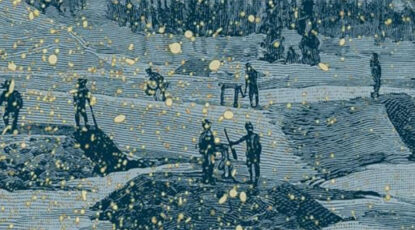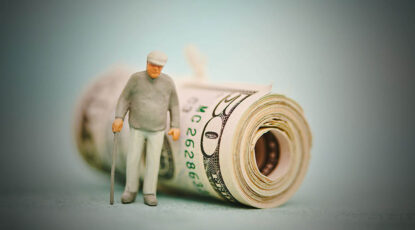U-Michigan launches strategic vision, pledges to be ‘the defining public university’

After a year of gathering input from the campus community, the U-M administration has released its strategic vision for the next 10 years. Vision 2034 — detailed in an initial 43-page report — calls upon the University to leverage its interdisciplinarity and excellence at scale to educate learners, advance society, and make groundbreaking discoveries.
-
When ‘Red Emma’ came to town
In the 1910s, anarchist, writer, and provocateur Emma Goldman, described by J. Edgar Hoover as ‘the most dangerous woman in America,’ paid regular visits to Ann Arbor. She described one rowdy U-M crowd as ‘pampered parasites, not one of them with enough backbone to fight a flea.’
-
Genre-jumping Fulbright scholar takes a novel path
Aspiring scientist Ariel Djanikian, MFA ’04, read the writing on the lab wall when she found herself prioritizing creative writing over her latest experiment. Her fascinating and often tragic family history informs a recurring theme in both of her novels: the obliteration of one group of people for the convenience of another.
-
Mood Lifters: Think of it like ‘Weight Watchers’ for mental health
This proven and peer-led mental wellness program, created by a U-M scientist (and WW success story), seeks to help people who shun or can’t afford traditional therapy. Like the popular weight-loss program, it’s community-based, inexpensive, and — best of all — scaling up.
-
Dementia’s devastating financial and family impact
People diagnosed with dementia saw their out-of-pocket spending for health care more than double, and their net worth decline by more than 60 percent, within the first eight years of being diagnosed, according to U-M researchers. Peers without dementia didn’t see much change in either financial measure in that time.
-
How bedside musicians helped one family cope with tragedy
The Gifts of Art Bedside Music and Art Program at Michigan Medicine is staffed by musicians specially trained in providing acoustic music for patients at the bedside. Artists will go “where patients, families, and staff members need us,” says coordinator Sam Vandiver.
-
Neuroscientist Huda Akil wins National Medal of Science
The U-M neuroscientist is the eighth faculty member to receive the nation’s highest scientific honor. Her work contributes to the understanding of depression, anxiety, and addiction by delving into the genes, proteins, and cells that help govern human emotions and moods, and responses to pleasure and pain.
Columns
-
President's Message
AI’s promise for teaching and learning
As U-M customizes Gen AI tools on campus, President Ono focuses on best practices defined by accessibility, privacy, integrity. -
Editor's Blog
Something old, something new
Who's ready for an excellent adventure? Just keep an eye peeled for the (virtual) hot lava. -
Climate Blue
Order from disorder
Ricky Rood explains the organizing principles behind weather, which is how we feel climate. -
Health Yourself
Getting a leg up on sciatica and piriformis syndrome
Victor Katch compares and contrasts sciatica and piriformis syndrome and explains how to ease that pain in your butt.
The Art Show
Founded in 1990 with a single theatre workshop, the Prison Creative Arts Project (PCAP) is a program of U-M’s Residential College. Courses serve as gateways for undergraduate participation in prison arts workshops and provide academic training in issues surrounding incarceration and practical skills in the arts. The program’s Annual Exhibition of Artists in Michigan Prisons (“the art show”) is one of the largest exhibits of artwork by incarcerated artists in the world. The annual exhibition, free to the public, is presented with support from the Michigan Arts and Culture Council. It runs through April 2 at the Duderstadt Gallery. (Click on the images to enlarge. Images are courtesy of PCAP.) Learn more about PCAP.



















